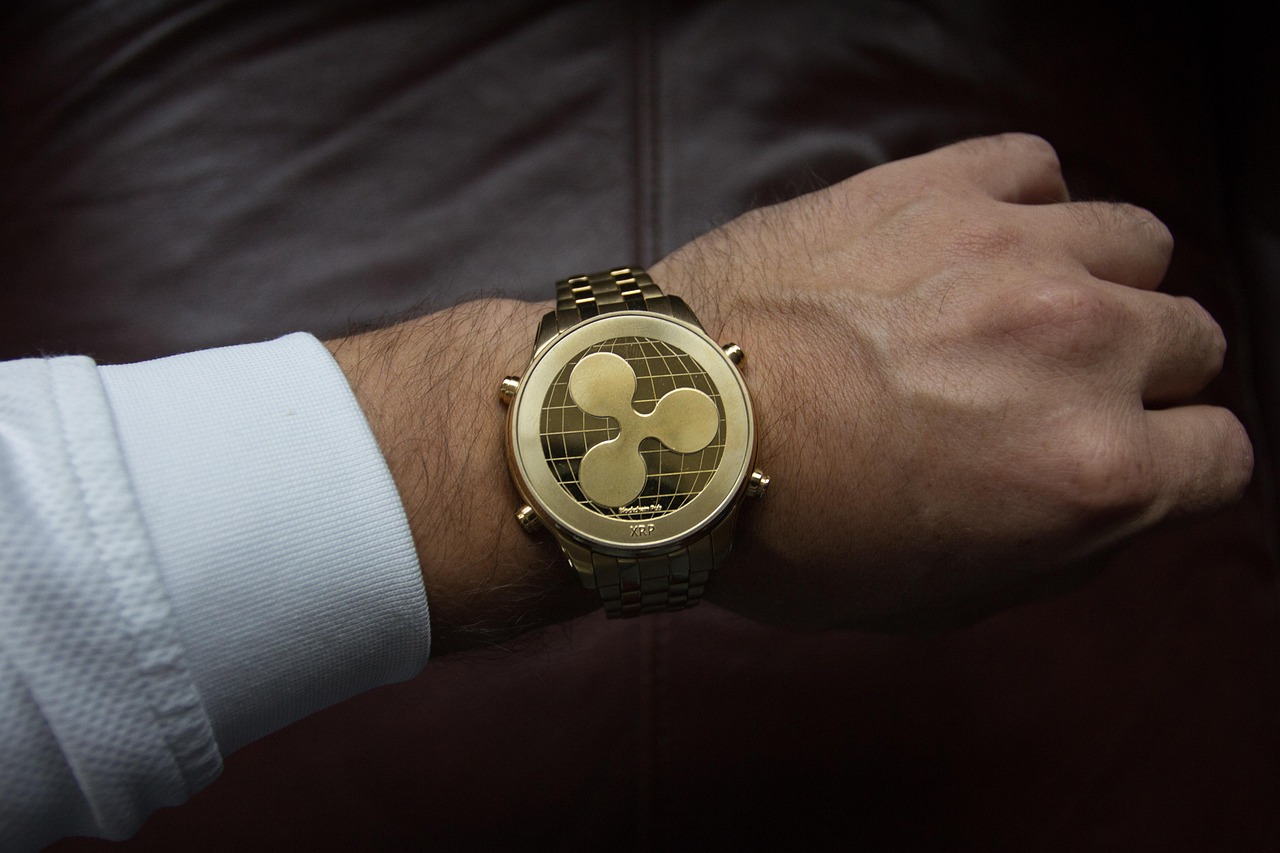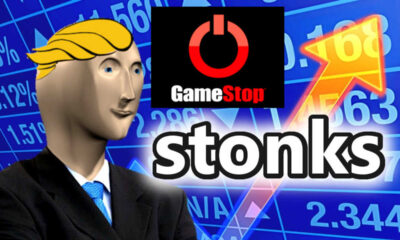Business
Turn 1.5 Minutes into a Lifetime of Wealth: Discover How with Shark Tank’s Original Shark!
Shark Tank’s Kevin Harrington has a knack for spotting products that drive consumers to take massive action. So when he gets excited about Restaurant.com and CardCash.com [OTCQB: RSTN | RDE, Inc.], then you know it’s at least worth hearing him out. Especially when it takes less than 2 minutes. So let’s take a closer look at what he’s got to say, and why we should all be listening.
![Kevin Harrington - 1.5 Minutes to a Lifetime of Wealth [OTC: RSTN]](https://born2invest.com/wp-content/uploads/2023/12/kevin-harrington.jpg)
If you’ve ever watched Shark Tank, then there’ve probably been a few occasions where you’ve thought “I wish I could get access to an investment opportunity like that.”
Unfortunately, unless you’ve got the sort of money and deal flow of a typical shark, then opportunities like that rarely come along.
But that’s not to say they don’t.
In fact, if you can spare exactly 1.58 minutes of your time right now, I can prove to you that Shark Tank-style deals can and do crop up for the average person.
Sometimes, they even fall right into your lap.
Here, watch this video (it’s the proof).
That, my friendly friend, is none other than original shark, Kevin Harrington.
And he made his fortune by repeatedly predicting precisely what products would drive consumers to take massive action (more on this soon).
So when he tells you he’s excited about something consumer-y, you should at least take a closer look.
Especially when that something is a publically traded company you can own a part of today.
(PS: In case you missed it in the video, the company behind CardCash.com and Restaurant.com is RDE, Inc. [OTCQB: RSTN]
First, Here’s How Kevin Harrington Built His Wealth
While good looks or a decent TV presence probably helps, getting selected as a Shark Tank shark requires, at a minimum, a decent track record as an investor or entrepreneur.
In fact, if you dig into the background of many sharks, you’ll find their track record wasn’t just decent — it was downright insightful.
Take Mark Cuban, for example. He earned his first millions after founding a software company in the 80s. Then he turned that into hundreds of millions before the 90s were even up after he got involved with online streaming while Netflix was still selling DVD rentals.
Kevin Harrington — The Godfather of the Modern Infomercial
Kevin Harrington, for his part, has a similar story. Albeit, in an entirely different industry — the modern infomercial.
Essentially, Kevin’s the guy who, way back in the mid-80s, spotted a bunch of so-called “dead time” on air (late night), and then figured out a way to make money from it.
And make money he did, to the tune of hundreds of millions in sales, all while propelling the phrase “As Seen On TV” into the American vernacular.
Now, as for why this uniquely qualifies Kevin to spot opportunities like Restaurant.com and CardCash.com, that’s going to take a bit more explaining.
But, as for why Kevin’s bet on late-night, feature-length informercials was so ahead of its time, just cast your mind back over the last 30 years of TV history.
Prior to 1985, late night was considered “dead time” for TV. After all, who’d want to advertise when the only people watching are probably unemployed bums with no disposable income?
But then, crazy Kevin comes along, plops his informercials on air, and discovers a jackpot.
Nurses, doctors, and other late-night shift workers winding down after a hard “day”. Sleepless mothers nursing a restless child. Jet-lagged travelers. The list goes on.
Now Here’s Why That Story Matters When He Talks About Restaurant.com & CardCash.com
Today, the success of the late-night, feature-length, direct-response infomercial seems self-evident.
Or, at least, looking in from the outside, it does.
But take a closer look, and suddenly, that self-evidence disappears.
First, take into account the sorts of people who might even be watching late-night TV.
Now sure, once you rule out the cliche of the unemployed bum, a lot of them are, theoretically ideal consumers.
But think about the circumstances that brought them to watch late-night TV. Usually, we’re talking about insomnia, jet lag, shift work, crying babies, and other less-than-ideal circumstances.
Now ask yourself this — “Would any of those circumstances leave me primed with a high buy intent?”
The answer, of course, is “not really.”
Heck, I’d even be willing to bet that most people who find themselves watching late-night infomercials have the exact opposite of buy intent. They just want to wind down and get to sleep ASAP.
And that’s what makes Harrington’s work so much more impressive here.
He not only identified that there was indeed some sign of life during so-called “dead” time.
But he also figured out a way to identify products that resonated with consumers so profoundly that people couldn’t help but pick up the phone and order right then and there.
Read that last sentence again. It’s a mouthful, but it’s the most important thing to recognize here.
That, and the fact that Kevin pulled off this “dead air time”-defying stunt over, and over, and over, and over again.
In other words, Kevin Harrington has a pretty good knack for identifying what the average American consumer wants so badly that they feel like they need it.
And now, he’s just identified the RDE, Inc. [OTCQB: RSTN] flagship brands — Restaurant.com and CardCash.com — as exciting opportunities.
Do you reckon he might be worth listening to?
Yep, and so do I.
Now Let’s Talk About CardCash.com & Restaurant.com
We’ve already spent a lot of time talking about Kevin here, so I’ll keep this part brief. (But I’ll point you in the direction of some more in-depth information at the end if you’re still hungry for more.)
Let’s start with RDE’s recent acquisition of CardCash.com.
What Will Drive Consumers to CardCash.com?
The high-level overview of CardCash.com is that it’s an online buy-sell exchange for unwanted gift cards. Basically, if granny gives you a gift card that you don’t want for Christmas, you can head over to CardCash.com and sell it.
You will, of course, have to sell it at a slight discount. But, still, getting something like 90 cents on the dollar is a much better deal than sitting on a worthless piece of plastic (or, increasingly these days, a digital QR code in an email).
It’s also a much better deal for the person who comes along and buys it at, let’s say, 95 cents on the dollar. After all, if you were going to go shop somewhere anyway, why not get what is essentially a free discount?
And it’s at this point where I’m willing to bet that you’re more than just a little bit interested as a consumer here, right? (Yes, CardCash.com does have some pretty robust systems in place to tackle potential fraud if that was holding you back.)
And, if my bet is correct, then I think we just answered the question about what’s going to drive consumers to CardCash.com.
Let’s move on to Restaurant.com.
(PS: CardCash.com is a lot more than just a C2C platform. Take a look here to discover a little more about the B2B and B2C side of its gift card exchange.)
(PPS: Gift cards are a $325 billion-a-year industry.)
What Will Drive Consumers to Restaurant.com?
In one way, CardCash.com is a lot like Restaurant.com. That is, both platforms offer consumers the opportunity to grab discounts. But there are, of course, some differences.
The first, as the name might suggest, is that Restaurant.com doesn’t sell unwanted gift cards. Instead, it sells discounted dining experiences.
The second difference is that you can’t offload unwanted restaurant meals on Restaurant.com. (For obvious health and safety reasons, this will never work.)
Instead, Restaurant.com is 100% B2C focussed, relying on restaurants looking to market themselves to new consumers to provide discounts (and, quite often, some of these discounts are huge. In fact, you don’t even need to look hard to find 50-70% off discounts.).
Now, once again, I’m willing to bet that at this point, you’re probably at least a little bit interested.
And, if you’re not, then I’d like to hedge that bet with another bet — you’re not representative of the average American consumer.
Looking Beyond the Consumer Interest
Naturally, an entrepreneur like Kevin Harrington doesn’t make their success off the back of a “Midas touch” alone (if we can call Kevin’s knack for identifying precisely what consumers want so badly they need it a Midas touch).
And that means, there’s a lot more going on behind the scenes at Restaurant.com and CardCash.com than just massively appealing products.
But, as promised, I’m going to keep the tail end of this article short. And so instead, I’m going to point you in the direction of a bit more information.
Here’s what you might want to know:
- Here’s an article about how RDE’s ability to identify opportunities to secure discounted inventory without providing a single subsidy dollar itself is key to its competitive advantage. [Link]
- That same article also discusses how a tectonic shift in consumer spending patterns drove a similar discount-driven platform (Vegas.com) to get acquired for 6x its previous valuation (and then discusses the logical implications for RDE, Inc.). [Here’s that link again]
- Here’s a link to the RDE, Inc. Yahoo Finance pages which Kevin suggested you should visit earlier. [OTCQB: RSTN]
- Here’s some more coverage of CardCash.com with more of a focus on the B2B and B2C sides of its business, and how these will help it capture an even bigger share of the $325 billion a year gift card market. [Link]
- And, finally, here’s a deep dive into the CardCash.com acquisition and what it means for Restaurant.com and RDE, Inc. [Link]
__
(Featured image via YouTube)
DISCLAIMER: This article was written by a third party contributor and does not reflect the opinion of Born2Invest, its management, staff or its associates. Please review our disclaimer for more information.
This article may include forward-looking statements. These forward-looking statements generally are identified by the words “believe,” “project,” “estimate,” “become,” “plan,” “will,” and similar expressions. These forward-looking statements involve known and unknown risks as well as uncertainties, including those discussed in the following cautionary statements and elsewhere in this article and on this site. Although the Company may believe that its expectations are based on reasonable assumptions, the actual results that the Company may achieve may differ materially from any forward-looking statements, which reflect the opinions of the management of the Company only as of the date hereof. Additionally, please make sure to read these important disclosures.

-

 Fintech1 week ago
Fintech1 week agoRipple and Mercado Bitcoin Expand RWA Tokenization on XRPL
-

 Crypto10 hours ago
Crypto10 hours agoXRP Hits New All-Time High Amid U.S. Crypto Policy Shift and Ripple’s Expansion
-

 Impact Investing1 week ago
Impact Investing1 week agoItaly’s Electric Cars Market Rebounds, but 2030 Targets Remain Elusive
-

 Cannabis3 days ago
Cannabis3 days agoGermany Moves to Tighten Medical Cannabis Rules Amid Surge in Private Use




![RDE, Inc. [NASDAQ: RSTN] hits the Nasdaq](https://born2invest.com/wp-content/uploads/2024/08/rde-inc-hits-the-nasdaq-400x240.jpg)
![RDE, Inc. [NASDAQ: RSTN] hits the Nasdaq](https://born2invest.com/wp-content/uploads/2024/08/rde-inc-hits-the-nasdaq-80x80.jpg)


















